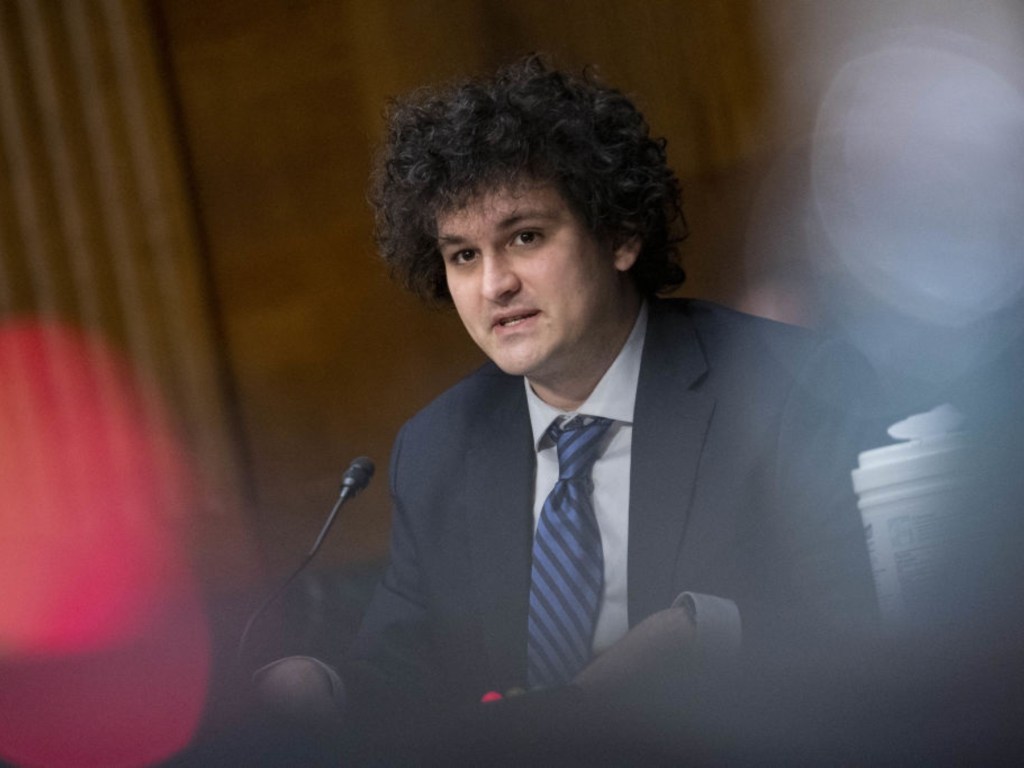FTX Collapse: Last week, FTX was one of the world’s largest cryptocurrency exchanges. Now, it’s worth less than nothing after its collapse setting off a financial bomb that went straight to the heart of the crypto industry itself, sending shockwaves of uncertainty throughout the ecosystem.
Now, millions of people from around the world are peering into the wreckage, all of them asking the same question: “What happened to FTX?”
The exchange’s former-CEO, Sam Bankman-Fried (SBF), was once a leading figure in crypto. For many, the curly-haired, 30-year-old former-billionaire wasn’t just the head of his exchange FTX, he was the benevolent face of the crypto industry itself.
The finer details of the meltdown are extensive and new information is surfacing at an astounding rate. This explainer aims to break down the FTX mess and help guide you through the events in a simple way.
The key problem with many of the explainers circulating on the internet right now, is that the alphabet soup of acronyms — SBF, FTX, FTT, SEC, CFTC — make it borderline impossible for those who doesn’t work full time in crypto to get a good understanding of really happened with FTX.
Here’s how it all went down.
1) A journalist starts an avalanche
The FTX saga began when a journalist from CoinDesk, Ian Allison, published a report showing that a hedge fund closely linked to FTX called Alameda Research had an enormous amount of a token called FTT on its books – roughly US$5 billion.
FTT is the native token (or crypto ‘stock’) of the FTX exchange, and was used by FTX to reward users for buying and selling crypto on the platform. Its value was derived from these incentives, and the overall value of FTT was also supposed to reflect the health of the FTX exchange.
The problem with Alameda holding these enormous quantities of FTT on its books is that FTX actually printed those tokens themselves. This meant that the real value of the FTX exchange was being falsely inflated by the billions of dollars in FTT tokens that it printed out of thin air.
2) A rival gets spooked by the report
While the report didn’t outright claim that FTT was “worthless”, it created a tidal wave of doubt around the financial status of the FTX exchange.
One of the people who took note of this was the CEO of rival exchange Binance, Changpeng Zhao (who goes by the acronym ‘CZ’ for short). CZ quickly realised that FTX and its shoddy FTT tokens may pose a significant risk to Binance and crypto markets more broadly.

At the time of writing, Binance is the world’s largest cryptocurrency exchange.
Despite technically being a competitor company, Binance had invested heavily in FTX through buying up hundreds of millions of dollars in FTT back in 2019.As a result, CZ took to Twitter to announce that he would soon sell all of the FTT that Binance owned.
Aside from the issue of FTT’s questionable value, CZ also had his own personal issues with the FTX’s CEO Sam Bankman-Fried. CZ believed that Bankman-Fried was using his influence in the upper levels of US politics to lobby against competitors, and saw him as a threat to the crypto industry for that as well.
And so, when CZ announced that he would begin selling more than half-a-billion-dollars worth of FTT, the crypto market got spooked, fearing for the long-term sustainability of FTX.
3) Mass withdrawals from FTX sow seeds of chaos
Panic set in quickly. Tens of thousands of FTX customers rushed to withdraw their funds from the exchange. This created what’s known in finance as a ‘bank run‘.
In the mad rush to secure their funds, customers withdrew more than US$5 billion from the exchange in a single 24 hour period. From this, FTX was forced to reveal that it didn’t actually have enough money to process everyone’s withdrawal request.
FTX was insolvent.

This shocking announcement also revealed that FTX had actually been using its clients’ funds to prop up its own trading activities and simply didn’t have the money on hand to return funds to its customers.
The price of the FTT token plunged more than 80%, tumbling from US$25 to US$3 in a matter of hours. FTT is currently trading for just US$1.76 a whopping 95% down from this time six months ago.
4) Binance saves the day! Wait, actually never mind
Binance briefly calmed everyone down by announcing that it would acquire FTX. This move would have ‘bailed out’ the beleaguered exchange while also getting to take all of its stuff. At the time it seemed like a pretty good deal.
Unfortunately for crypto investors, Binance quickly backflipped on the decision, saying that the financial issues at FTX were so terrible that the exchange was “beyond help”.
This announcement triggered a full-scale meltdown, as it confirmed the crushing reality that FTX was completely defunct, and customer funds on the exchange may not ever be recovered. Cryptocurrency prices fell drastically on the back of this news, with the Bitcoin plummeting 15% in 12 hours, dipping below US$16,000 for the first time since November 2020.
5) Sam Bankman-Fried asks for help (and 9 billion dollars)
On November 10, the finer details of FTX’s seemingly disastrous finances remained a mystery. This was until the Wall Street Journal leaked a series of phone conversations between Sam Bankman-Fried and private investors of FTX.
The calls revealed that FTX would need a whopping US$9.4 billion to cover the costs of returning its customer’s funds, which SBF had been using to finance his own, super-risky trading activity. Bankman-Fried sought funds from a wide range of investors, including Venture Capital firms that had previously invested in FTX in the past.
Popular VC firm Sequoia Capital rejected the call for aid, and instead wrote down its US$214 million investment in the exchange to $0, signalling a tough time ahead for FTX.
6) Sam Bankman-Fried issues a public apology
On Thursday evening, Bankman-Fried took to Twitter to issue a public apology to FTX users and shed some more light into what caused the collapse.
In the Twitter thread, Bankman-Fried revealed that he transferred an eye-watering US$4 billion in customer deposits to prop up the trading activities at FTX’s sister trading fund Alameda Research. He also insisted that the ongoing concerns plaguing FTX users were limited to the international arm of FTX, which has now been revealed to false, with FTX and nearly 100 associated companies filing for bankruptcy.
At the time, SBF added that the total amount of the exchange’s current assets and holdings were adequate to cover its debts, however the exchange still faced a liquidity crisis (a situation where an organisation runs out of available cash to return to its customers).
The ongoing liquidity crisis meant that there were still many thousands of FTX customers who remained unable to access funds they stored on the exchange. SBF explained that the organisation was looking for paths forward to help get people’s money returned to them as quickly as possible.
“There are a number of players who we are in talks with, LOIs [letters of intent], term sheets, etc,” Bankman-Fried wrote. “We’ll see how that ends up.”
7) FTX Collapse: The authorities shut down FTX and call in liquidators
A few hours after Bankman-Fried issued his apology, the Securities Commission of the Bahamas froze the assets of FTX and called in an official ‘liquidator’ that will aid FTX in selling off existing assets.
For context, the headquarters of FTX are located in the Bahamas, which is a hotspot for large financial firms looking to escape the more prudent regulation of the United States.
8) FTX declares for bankruptcy, unleashing financial contagion
On November 11, FTX filed for bankruptcy in the United States officially signalling to the broader crypto market that funds stranded on the exchange may be potentially unrecoverable. While this was terrible news for everyday investors who stored large sums of money on the exchange, it spelled disaster for key institutions in the crypto space.
FTX was a staple element of the crypto economy, with hundreds of major crypto organisations sharing a professional relationship with the exchange.
As a result, in the days following the bankruptcy announcement, a seemingly ever-growing number of crypto exchanges and companies began halting withdrawals. The list of firms that have halted withdrawals as a result include: Hong Kong-based exchange AAX, Australia-based platform Digital Surge, Japanese exchange Liquid Global and more recently key industry players Gemini and Genesis.
Unfortunately, some firms that were involved in significant financial relationships with FTX, such as crypto lending platform BlockFi, have already been forced to declare bankruptcy.
9) FTX Collapse: A New York Times “fluff piece” on SBF sets Twitter ablaze
On November 14, an article from the New York Times attempted to shed some light on the FTX catastrophe. The problem? The article’s author David Yaffe-Bellany spelled out the events in a way that parroted Bankman-Fried’s idyllic version of the story, omitting many of the downright corrupt, potentially criminal actions of the former-CEO.
The piece caused a major uproar on Twitter, with the crypto community agreeing that the piece failed to explain any of the more gruesome details.
10) FTX Collapse: Bankman-Fried reveals his true colours
Already, things for the former-FTX CEO weren’t exactly peachy, but Bankman-Fried somehow managed to make a bad situation much worse in an unhinged series of Twitter messages with a reporter from US news site Vox.
In the messages Bankman-Fried provided wide-ranging responses including his regret toward the decision to file for bankruptcy. However, what caught many by surprise was his outright pale-faced admission that his widely-recognised image as a philanthropically motivated, ethical leader in the crypto industry was a downright lie.

11) FTX Collapse: New bankruptcy filing reveals an ugly future for FTX
The most recent addition to the ongoing saga comes from a November 17 filing made to the bankruptcy court in the US state of Delaware, where the US branch of FTX is headquartered.
Notably, the lawyer in charge of the proceedings and new CEO of FTX, is none other than the man responsible for cleaning up the Enron Scandal, John Ray III.
What’s the Enron Scandal?
For those unfamiliar with the Enron Scandal, it still stands as the largest corporate bankruptcy case in modern history. The energy giant duped regulators by hiding illegal financial activity on off-book accounts and using fake assets to prop its value. When the smoke cleared Enron had destroyed around US$74 billion in value to shareholders and associates.
In a harrowing comment contained in the filing, Ray claimed that the FTX catastrophe was “even worse” than Enron, adding that a “substantial portion” of the assets held by FTX may be “missing or stolen”.
“Never in my career have I seen such a complete failure of corporate controls and such a complete absence of trustworthy financial information as occurred here.”
John Ray III, CEO of FTX
“From compromised systems integrity and faulty regulatory oversight abroad, to the concentration of control in the hands of a very small group of inexperienced, unsophisticated and potentially compromised individuals, this situation is unprecedented,” Ray added.
The document revealed that a whopping one million people from around the world are owed money by FTX. It also exposed further evidence of financial misdeeds perpetrated by key members of FTX, with records showing that FTX insiders used the company’s funds to purchase real estate and other luxury items for themselves.
“In the Bahamas, I understand that corporate funds of the FTX Group were used to purchase homes and other personal items for employees and advisors,” Ray wrote.
The filing also disclosed further evidence of FTX’s financial misdeeds, with new documents showing that FTX’s hedge fund Alameda Research was exempt from being liquidated when trading on FTX.
FTX Collapse: What happens to FTX and its customers now?
The future of FTX and most importantly, what happens to the US$10 billion owed to clients remains uncertain. Unfortunately for any FTX customers still clinging to the hope of seeing their funds returned, the legal protections for users of crypto exchanges aren’t exactly rock solid.
While the users of a cryptocurrency exchange may feel like they are owed the same protections as bank account holders, they have far less legal protection. In the case of a failed exchange such as FTX, they are what’s known as ‘unsecured creditors’. From a legal perspective, unsecured creditors stand on the lowest rung of the ladder when it comes to who gets their funds returned.
Ultimately, the everyday users of FTX stand to be some of the last to recover funds, far behind bank loans but still slightly ahead of equity owners.
FTX Collapse: All in all, it’s a complete mess that continues to unfold day by day.



